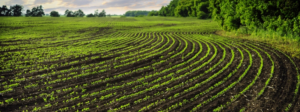
The Versatility of Anaerobic Digesters: Adaptive Financial Modeling
Many steer away from investing in Anaerobic Digesters due to concerns with market volatility in the energy industry, wondering if power purchase rates will drop or if Renewable Energy Credit legislation will continue in order to maintain confident revenue from biogas generation. Anaerobic Digesters are not a small capital expenditure. Some of the smaller systems range in the $2-3 million range and most of your successful business models require upwards of $8-10 million in initial investment.
Although the risk may not seem to be worth the reward, what many fail to acknowledge is the versatility of these systems and how Anaerobic Digesters can be utilized to serve multiple sectors of industry. Very valuable sectors, I might add.
WASTE MANAGEMENT

In addition to renewable energy, either through direct sales of natural gas or using the gas to power an electrical generator, Anaerobic Digesters can serve as a cost-effective disposal alternative for compatible waste streams such as food waste, food manufacturing byproduct waste, wastewater sludges, and high-density animal manures. According to Waste Management, Inc. One-third of food goes uneaten across the globe. Wasted food can add billions of tons of GHG emissions to the atmosphere. In the U.S. alone, more than 60 million tons of food is wasted each year, and displaced food carries a price tag of well over $160 million.
The EPA estimates more food reaches landfills and incinerators than any other single material in our everyday trash, making up 22 percent of the disposed stream. Landfilling of certain waste streams, especially in liquid waste, have become more strict and far more expensive than in previous generations, reaching prices as high as $279 per ton. Generators of organic waste are now leaning much more heavily on disposal alternatives such as anaerobic digestion, bringing a new and highly valuable revenue stream into the industry.
AGRICULTURAL PRODUCTS
The other is agricultural revenue, being that the byproduct of anaerobic digestion is a nutrient rich effluent that can be utilized or sold as fertilizer. A company could own tillable acreage to land-apply the digester’s effluent (digestate) and collect revenue from the high yield crop harvest with substantial savings in using the digestate as fertilizer. The other option would be to process the effluent into a liquid or pelletized fertilizer to be sold on the open market. Current farming costs for nitrogen are sitting around $100 per acre. As a byproduct, selling the digestate as fertilizer can be another revenue source to support the business.

Incorporating value from all three markets allows Anaerobic Digesters to be flexible in their primary revenue source. As energy values may change or decrease, waste disposal and agriculture will continue to see growth and security in the global economy. With such versatility, it is clear that Anaerobic Digesters are a more stable investment than originally thought and will very much continue into the future economy.

